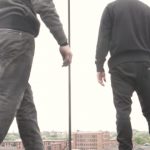As someone who’s petrified of water, nothing is more terrifying to me than scuba diving into the open ocean. This is something that I literally have nightmares about at least once a week. However, while I thought that nothing could top that on the terror scale, I have just been proven wrong.
The following video is from the helmet camera of a diver in the Gulf of Mexico just off the coast of St. George Island in Florida. Right in the middle of a his dive, he spotted a giant great white shark stalking him in the depths. He had no choice but to prepare himself for disaster.
One of the first things taught in diver training is how to share air in an emergency situation. And while it is taught in dive training, it should be practiced to nausea m by every scuba diver of every level. An out of air scuba diver might not get a second chance if the diver and dive buddy aren’t prepared for an emergency. It is all in its name, safe second (safe) scuba regulators. It will be a good waste of money if a diver never has to use it. On the other hand it will be the best money a diver will have ever spent if it saves the life of the diver or as importantly a dive buddy. One could argue that safe second dive regulators are a diver’s most important piece of dive gear.
When purchasing a safe second don’t confuse cheap with inexpensive. It’s not a good idea to purchase a used safe second off eBay or use a hand me down. A diver in an out of air situation is stressful enough without exasperating the problem with a failed safe second as well. A scuba diver hopes never to use the safe second but if a diver does need to use the safe second it needs to function without flaw. After reading several reviews on safe second (alternate air) regulators for diving, name brands such as XS Scuba, Sherwood, TUSA, ScubaPro and others, it really comes down to ease of use, comfort and price. They are all good to say the least and more importantly they are all safe and high quality dive regulators at comparable prices. Some have a mouthpiece that can turn up to 90 degrees for more comfort and ease of use, and other variations. Divers also know the importance of wearing the right stinger suits. It is really what each scuba diver needs or doesn’t need. As far as safety you can’t go wrong purchasing any of them.
Each scuba diver has to purchase the right scuba regulator for themselves and their needs. The most dangerous safe second is the one a diver needs and doesn’t have attached to their buoyancy compensator (bcd). If a diver logs enough dives through a period of years, it is a safe bet that an out of air diver situation will occur and every diver should be prepared for it. Don’t be the diver that didn’t have a safe second regulator for diving. Buy one today and the life you save might be yours.
To say this video is terrifying is a bit of an understatement.
(source: grayshep)
Luckily, for whatever reason, the shark turned away at the last minute and returned to the depths. Another moment and this diver would have been toast. Ugh…I hate the ocean.




Comments